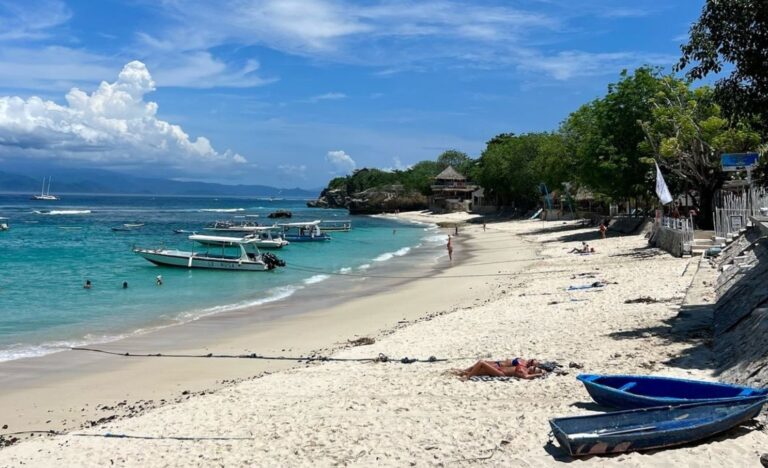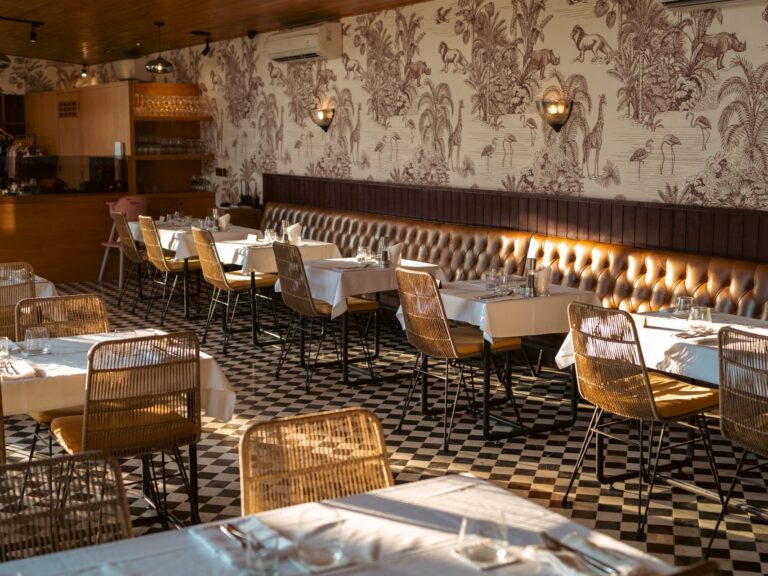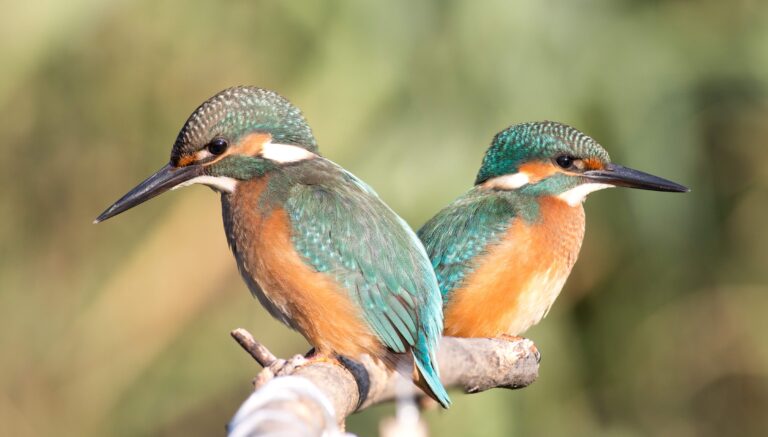While much of Bali is racing towards modernity in a bid to win the hearts, minds and wallets of visitors, Penglipuran Village is taking a rather different course.
It’s a beautiful village in the highlands of the Bangli District of East Abli.
It’s best known for how it has maintained its traditional Balinese village feel and preserved local culture and heritage without spurning modern conveniences.
All the housing compounds look as they would in any traditional village, and there are lovely, well-kept gardens lining the stone road that runs through the village.
The local temple remains at the heart of the community, and each home is well concealed from the road.
This allows for the homes in this place to enjoy all modern conveniences without detracting from the traditional village feel of the place.
Penglipuran Village is often a highlight of tours around the east side of Bali, and today, it’s a major community-based tourist destination.
Where Is Penglipuran Village?
The Penglipuran Village can be found in the East of Bali in the Bangli Regency.
The formal address is Jl. Penglipuran, Kubu, Kec. Bangli, Kabupaten Bangli, Bali 80611, Indonesia
How To Get To Penglipuran Village?
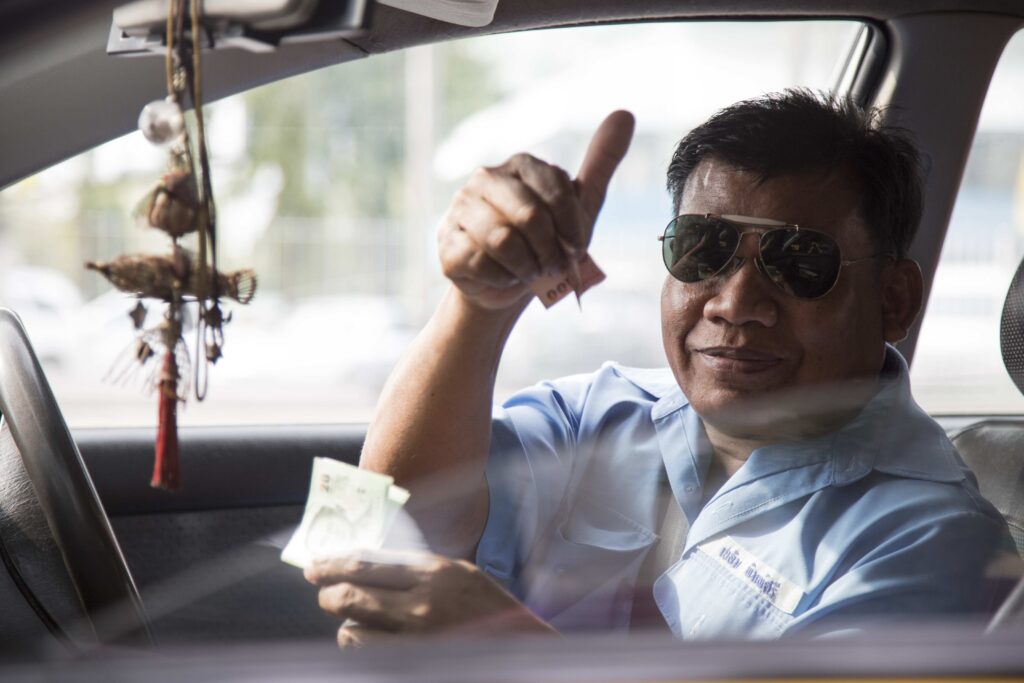
It’s very easy to get to Penglipuran Village if you’re coming from Denpasar or the Ngurah Rai International Airport.
You can take a ride-share using Grab or Gojek, and it won’t cost very much to get there as it’s just 45 kilometres or so to the North of the capital.
If you’re coming from further afield, you might want to consider the hire of a private car and driver for the day. This is a very convenient and reasonably priced way to travel, and it’s safe, too.
You might also consider taking an organized tour that includes Penglipuran Village as one of the stops on the tour.
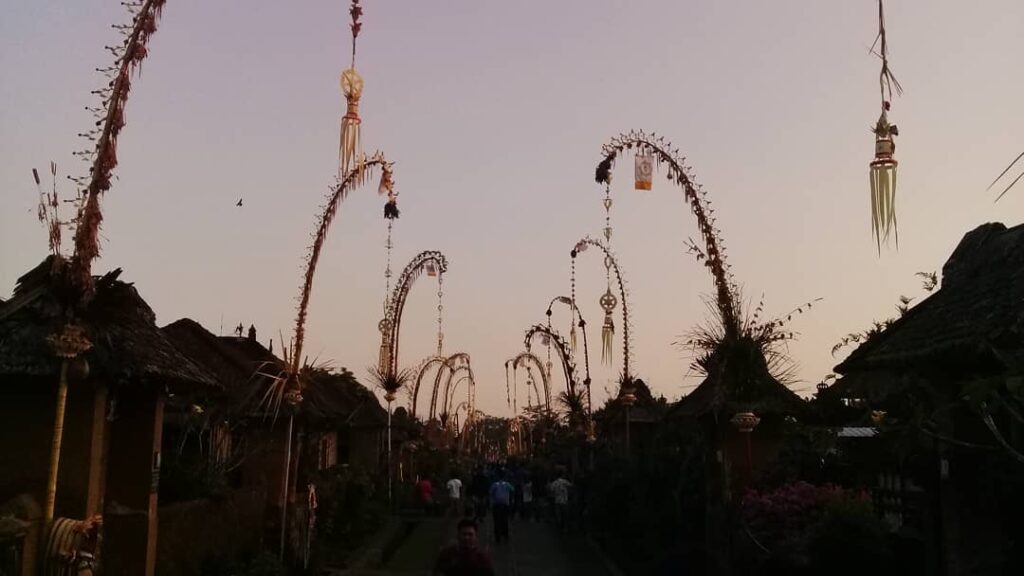
It’s also possible to rent a scooter and drive out there yourself, but we don’t recommend it.
You’ll be driving through some of the busiest stretches of road in Bali, and that’s a recipe for an accident. Even experienced riders find the traffic here hard going – if you’re not a regular rider, Bali is a bad place to learn.
It’s also difficult to be road-legal on a scooter, and if you’re not road-legal, any insurance you have is invalid.
That means if you do get into an accident, you might end up paying tens of thousands of dollars for treatment out of your own pocket.
It’s best to stay safe in Bali and avoid scooters.
When Is The Best Time To Visit Penglipuran Village?
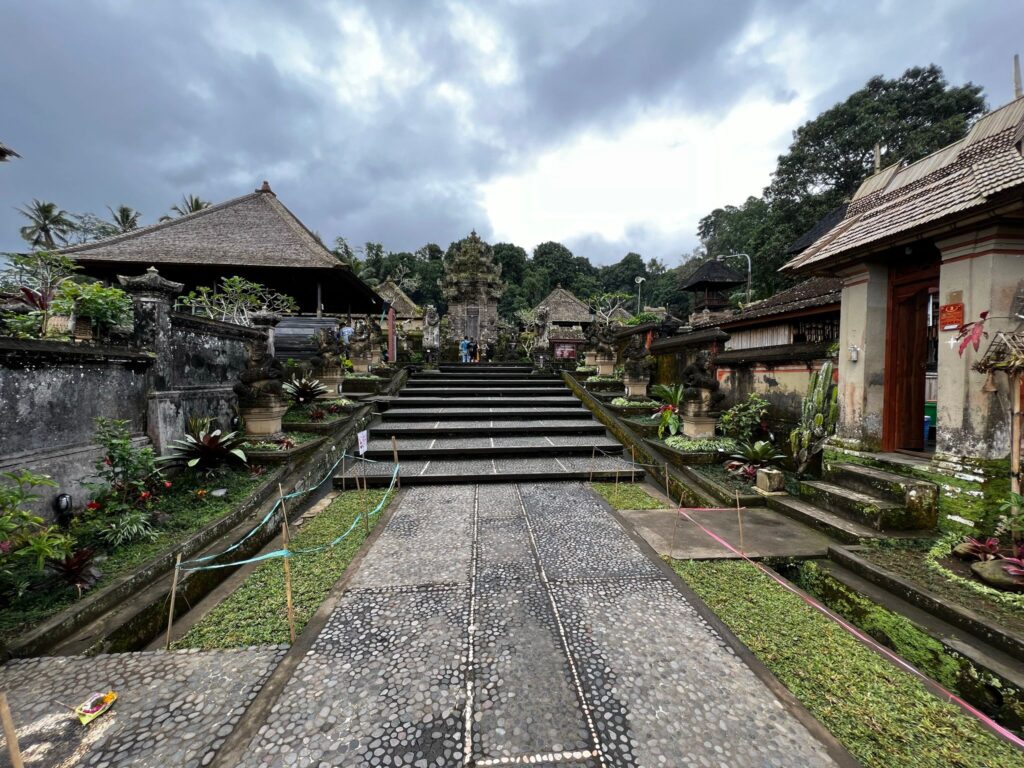
There is no bad time of year to visit the Penglipuran Village, and though the weather is a little milder and not so humid in the dry season, Penglipuran Village is welcoming and pleasant all year round.
We get an average of 8 hours a day of sunshine, even in the rainy season, so you won’t have your visit ruined by rain.
The village is open from 8.15 a.m. to 6.30 p.m. each day (for the general public, of course, the villagers may enter at any time).
The Penglipuran Village is becoming ever more popular as people hear of its charms, and if you want to beat the crowds, as with all tourist sites in Bali, it’s best to get there early in the morning.
You might also try to visit Penglipuran Village during Galungan Day celebrations.
This festival takes place twice a year, and ornate penjor (a visible symbol of prosperity erected by the Balinese) is on display outside of each home in the village.
This adds some colour to an already enjoyable visit.
Is There An Entrance Ticket To Penglipuran Village?
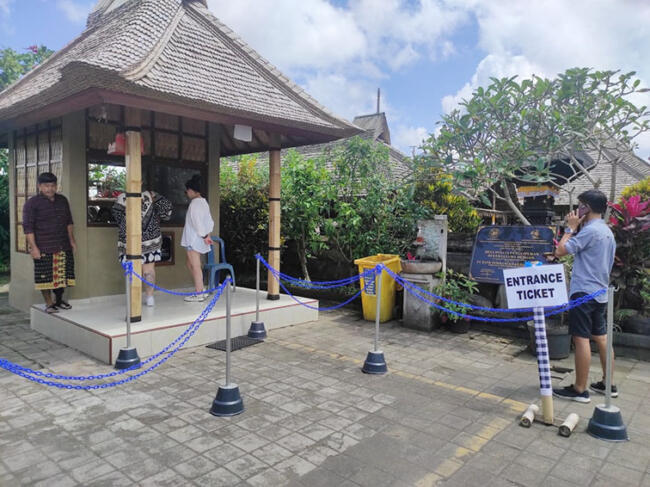
Yes, it costs 50,000 IDR for adults to enter Penglipuran Village and 30,000 IDR for children.
This is a very reasonable entrance fee, and your entrance ticket allows you to wander for as long as you’d like in Penglipuran Village.
About The Geography Of Penglipuran Village
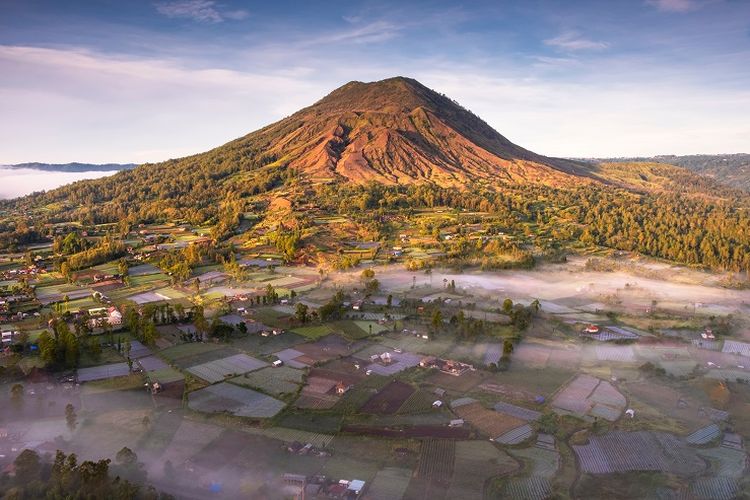
This village was part of the old Bangli Kingdom and is now Bangli Province in Bali.
It covers an area of over 100 hectares and sits at roughly 550 meters above sea level.
It’s just a short drive from Bangli City and a little farther from Denpasar.
Its neighbouring villages, Kayang, Kubu and Gunaska, all have very different approaches to modern life.
Because it’s elevated above sea level, the temperatures here can be as cool as 16 degrees Celsius (61 degrees Fahrenheit) to 26 degrees (79 degrees).
The History Of Penglipuran Village
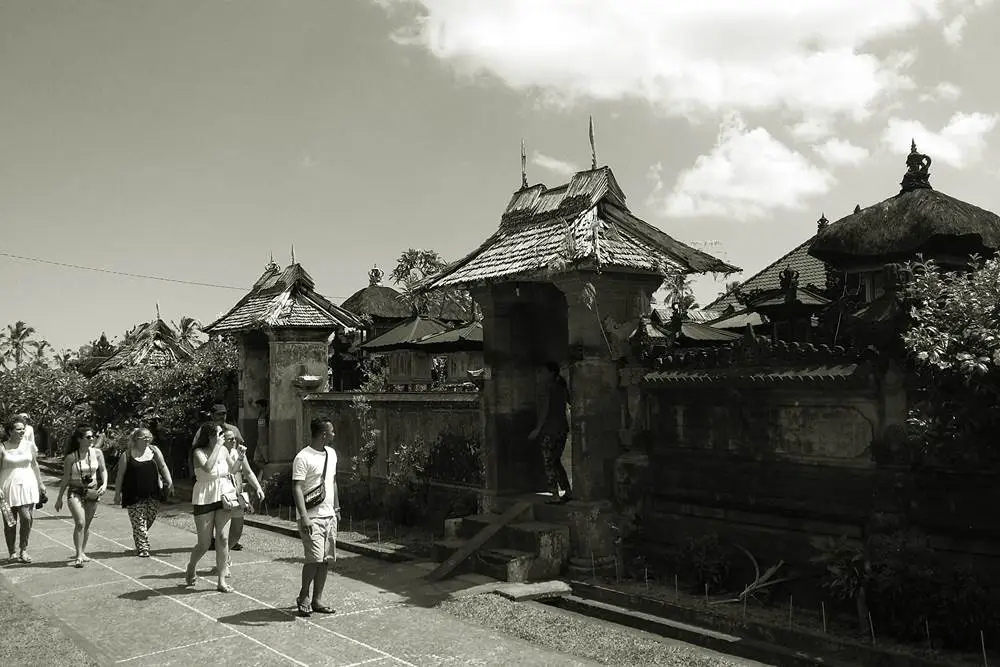
There have been people in this village since the reign of I Dewa Gede Putu Tangkeban III, and nearly everyone here believes their family came from the Bayung Gede Village at that time.
This is a positive aspect as the Bayung Gede Village was famous for people who excelled at religious pursuits, Balinese traditional customs, and martial defence.
This meant their services were highly sought after, and eventually, they were offered the place where Penglipuran Village stands today as a temporary resting area.
Eventually, people began to settle in the area, and the village became permanent.
Penglupuran is derived from the words “Pengeling Pura”. “Pengeling” means “remember,” and “pura”, which can mean “temple”, also means “ancestral home”.
Thus, the village name is a reminder of the fact that the people here are migrants from Bayung Gede.
Some people argue that this interpretation is wrong and the second part of the village name comes from “lipur”, not “pura”, but this would mean “remember sadness”.
They say that this must be the case as the Bangli King comes to the village temple to meditate.
How Many People Live In Penglipuran Village?
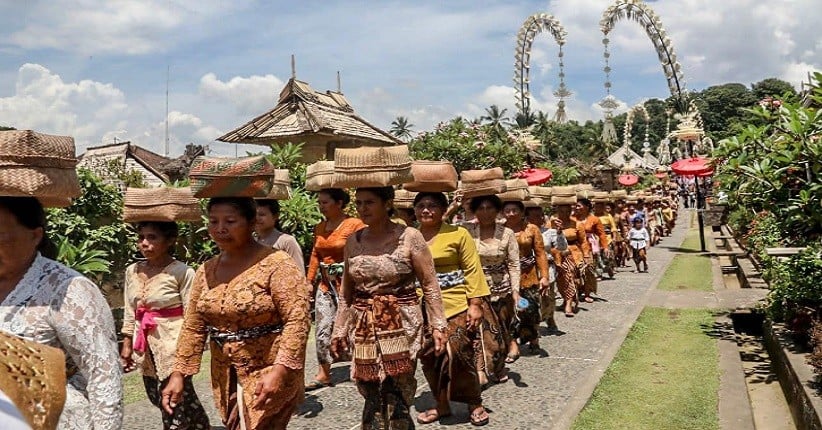
Indonesia doesn’t have a recent census, but in 2002, there were 832 people living within the walls of the village.
There were 197 families, with 76 permanent families and 121 temporary families.
More recent data from 2012 suggests that there was almost no growth in the population over the previous decade.
One quirk of village life is that marriage within the village is considered essential, and it is rare for a man to take a wife outside of the village population.
This means that there may be “blood bonds” between husband and wife prior to marriage.
What Is Life Like In Penglipuran Village For The Locals?
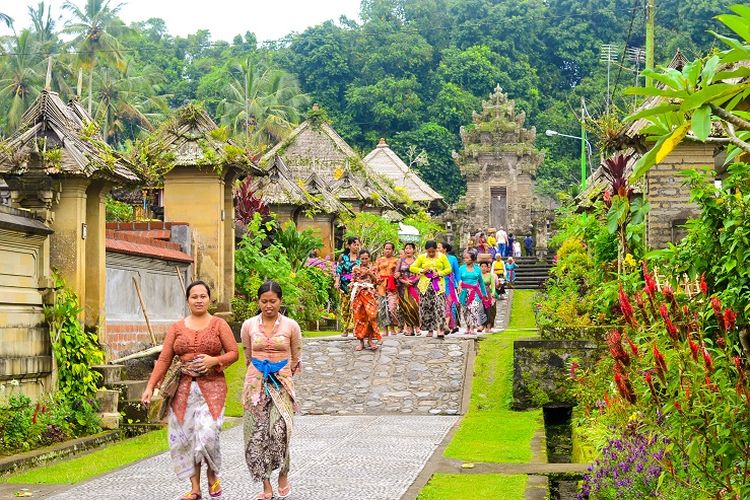
One of the biggest parts of life in this village centres around their unique approach to managing the land.
They base their approach on the traditional “Tri Mandala Concept”.
That is, the land is divided into three zones based on the spiritual purity of the land.
The purest land is the Utama Mandala, and it’s where the temple is found. This land is used to worship the gods and is considered a sacred place.
The Madya Mandala is the next level of sacred land, and it’s where the people of the village are allowed to live.
Then, the lowest level of land is the Nista Mandala, which is where the village graveyard is found and where the worship of Shiva (the god of destruction) is permitted.
The Awig And Drestha Laws
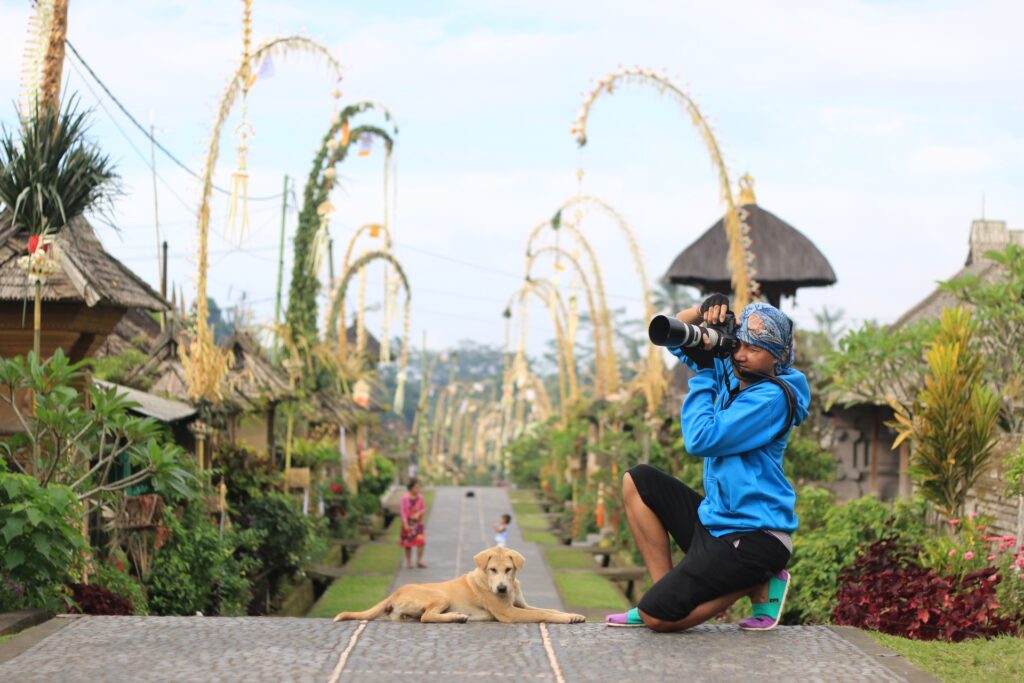
The villagers use a unique form of community law, too, and they have two standards of law.
The first is the “awig”, which is the written rules of the village. The second is the Drestha, or unwritten rules.
Some of the obligations under this law are a little different from much of the rest of Indonesia.
Firstly, the village is monogamous, and if someone should take up a polygamous relationship, the family is cast out into the Nista Mandala area.
They lose their rights as part of the village, and they may no longer join in traditional activities or attend the temple.
The villagers are also required by these laws to worship at the Pentataran Temple (in the centre of the village) to praise Brahma, at the Puseh temple in the most sacred part of the village to praise Vishnu and to worship Shive in the Dalem Temple at the bottom of the village on the path leading to the sea.
In addition, each family must maintain their own mini-temple on the grounds of their homes.
The Bamboo Forests Of Penglipuran Village
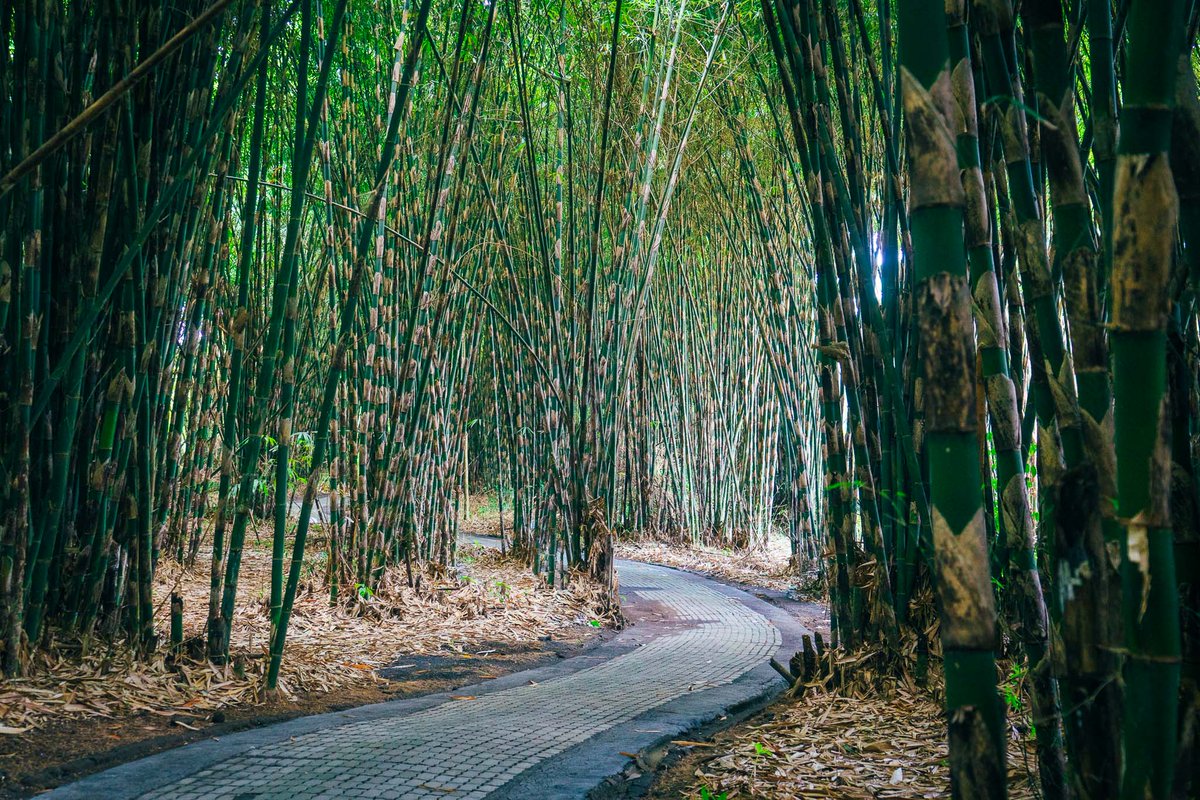
It’s said that Penglipuran Village offers the best bamboo forest in all of Bali.
The bamboo forest here is a farmed forest rather than a naturally occurring one and consists of 15 different native bamboo species.
The forest is entirely managed by the villagers, and some villagers have the right to exploit the bamboo commercially.
Bamboo is a major structural component of village housing, and 4-5 layers of bamboo are woven together to create roofs and walls.
Sadly, the demand for bamboo from this village has seen a recent reduction in its use for housing and the most recent houses in Penglipuran now use modern building materials, not bamboo.
What Can You Do At Penglipuran Village?
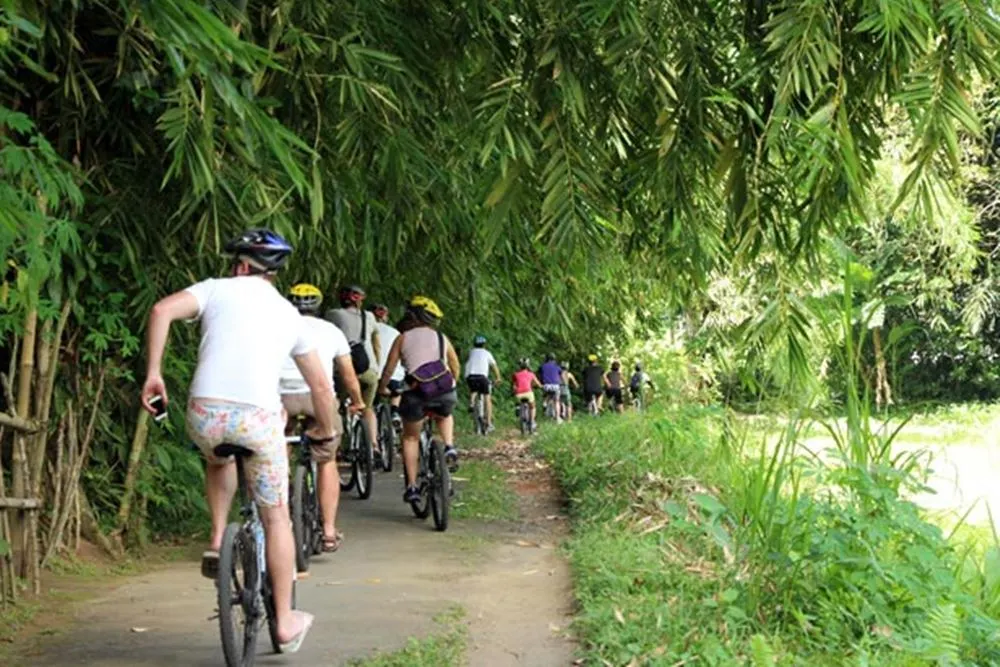
You are welcome to explore the bamboo forests and trek or bike through the paths in the local farmland and around the village.
You are not allowed into the temples in this village, but you may admire the outside of the buildings, take photographs and enjoy the architecture on display.
You can also go inside the individual housing compounds, and if you do, you will be welcomed by the people who live there.
Most of them will be delighted to show you around, in fact. Look out for the wooden hearths billowing smoke and soot all over the place.
The residents may also share an explanation of the spatial, architectural and spiritual rules that are followed as part of the design and construction of each house here.
There is a nice local coffee shop at the end of the main street on a smaller botanical garden path. The coffee is roasted locally, and it’s very good.
We can also recommend strolling down the side streets and alleys of the village as a whole, there’s a lot to see, and you’re allowed to go pretty much anywhere.
You can also visit the local craftsmen and learn about weaving bamboo, and you’ll be amazed at how versatile this material can be.
Also, look out for Loloh Cemcem, which is a locally made drink that uses herbs to give it its vibrant green colour.
FAQs
Is It Worth Visiting Penglipuran Village?
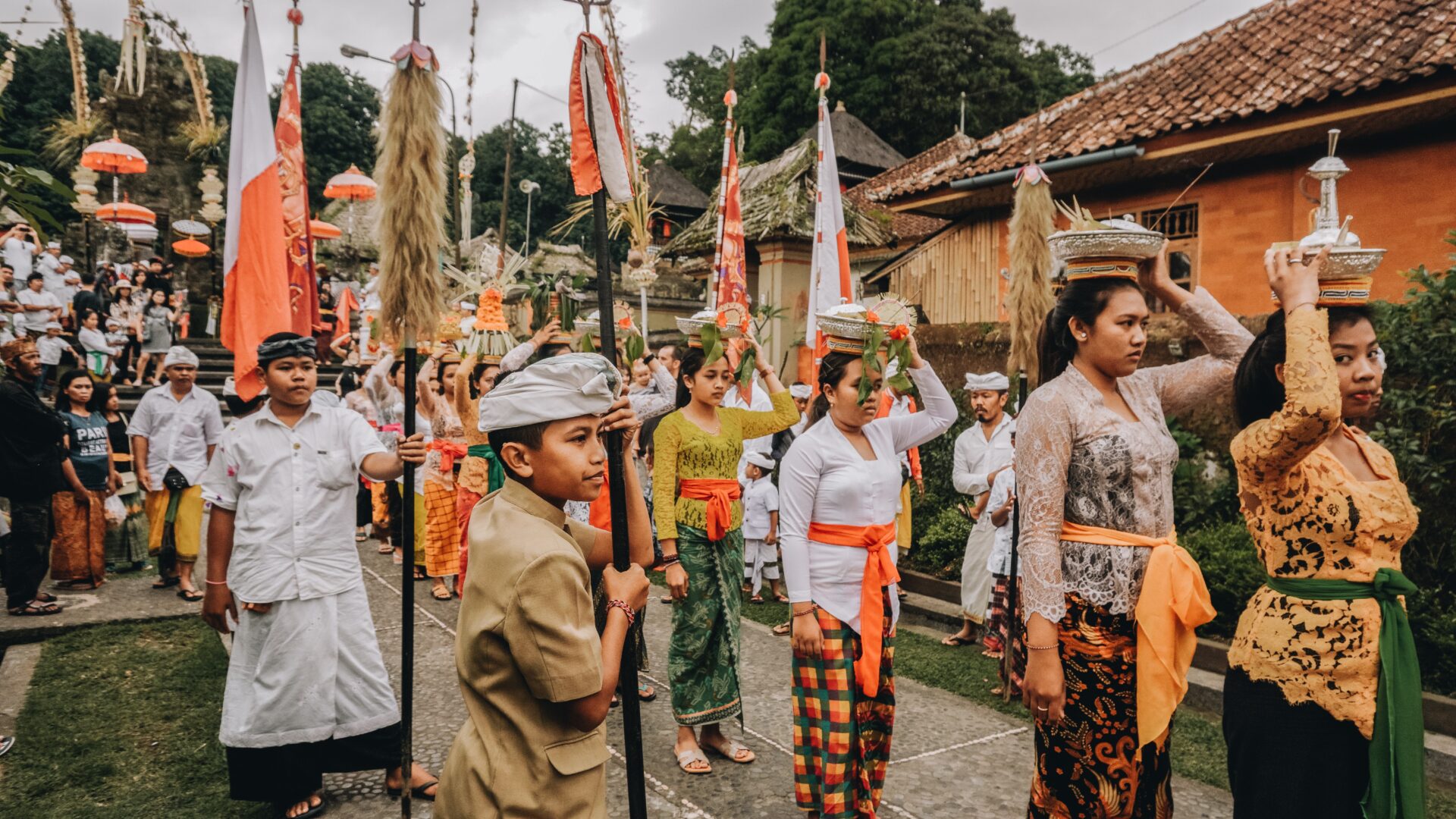
This is a hard question to answer. Penglipuran Village is a unique place in Bali, and it’s definitely worth including on a tour of the wider region.
However, there’s no doubt that its fame has led to Penglipuran Village becoming somewhat over-touristed, perhaps ironically.
The land management here is second to none, but the parade of many tourists in motorized vehicles threatens to undo all the awesome things the village has achieved.
What Is Penglipuran Village Famous For?
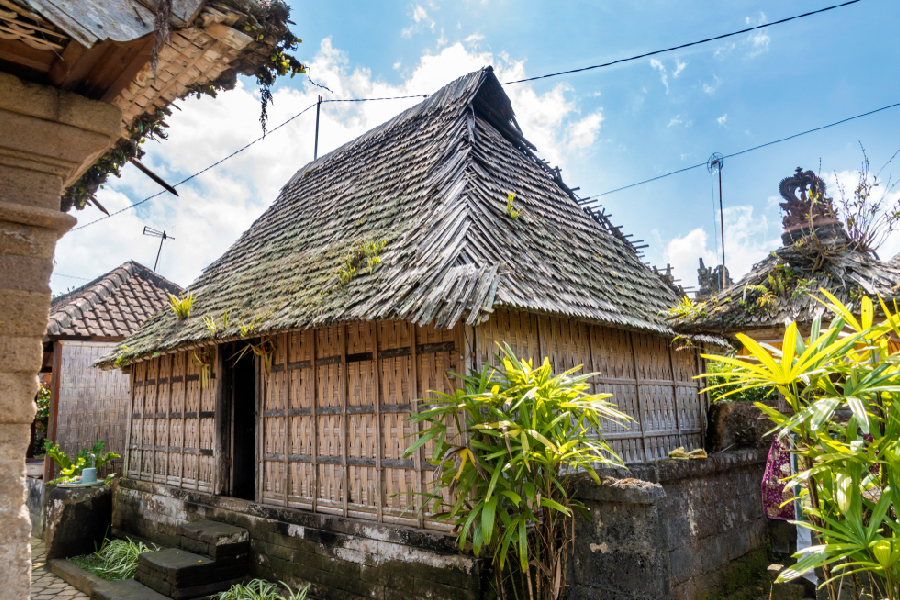
Penglipuran Village is famous for its bamboo forest and for winning the Indonesia Sustainable Tourism Award for being one of the cleanest villages on the planet.
The traditional houses aren’t quite so traditional when you get up close to them, but the clever thing about this village is that this part of this Bali province appears to be entirely traditional when, in fact, it’s very modern indeed.
What Is The Cleanest Village In Indonesia?
Penglipuran Village is officially the cleanest village in Indonesia.
What Is The Third Cleanest Village In The World?
Penglipuran Village is officially the third cleanest village in the world. That ranking probably changes from time to time, but it’s an impressive achievement from this Kubu Village, located in one of the more obscure areas of Bali.
What Makes Penglipuran Village Different From Other Balinese Villages?
Penglipuran Village offers a unique blend of the modern and the traditional. Each house is kept feeling like it belongs in a traditional village, but inside each house are all the trappings of modern life.
Residents have done an amazing job of making their daily lives appear to be one thing while preserving their local culture and yet still being as contemporary as any other life in any other part of Bali.
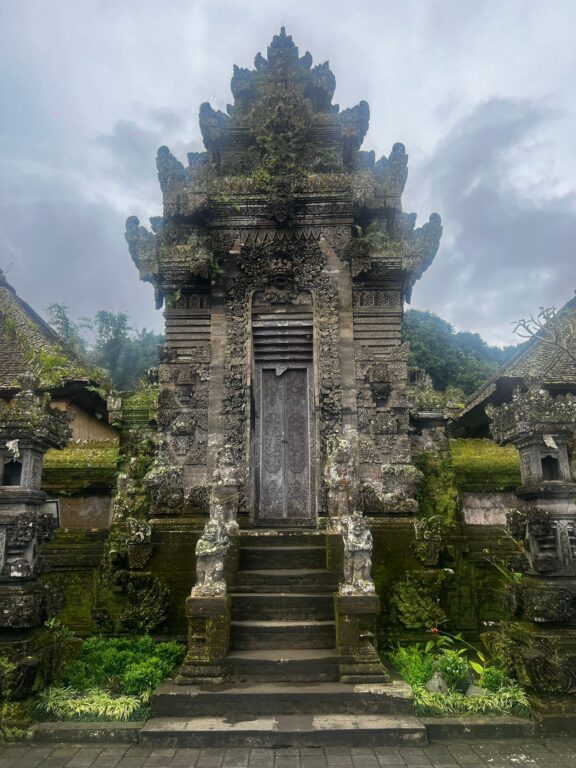
Final Thoughts On This Traditional Balinese Village
Penglipuran Village is an odd place. We love the fact that it won the Indonesia Sustainable Tourism Award, and we celebrate their efforts to combine the life of traditional villages with modern amenities.
However, there’s something about Penglipuran Bali Village that makes it more of a tourist trap than it needs to be.
We can heartily recommend visiting Penglipuran Village to explore bamboo forests, see the village temple, and support sustainable destinations as part of a wider tour of this part of Bali.
We’re just not 100% certain that it’s worth visiting all by itself. The village offers some interesting insights into the possible future of Bali, and the friendly locals are very welcoming, mind you.








